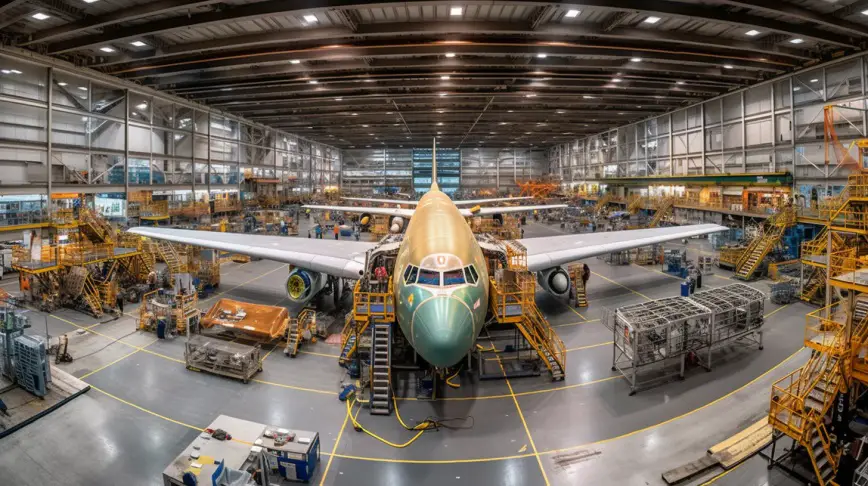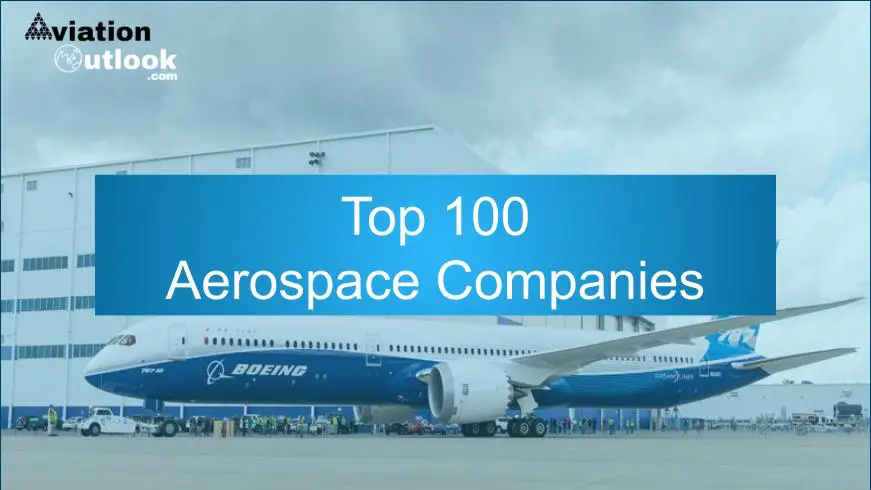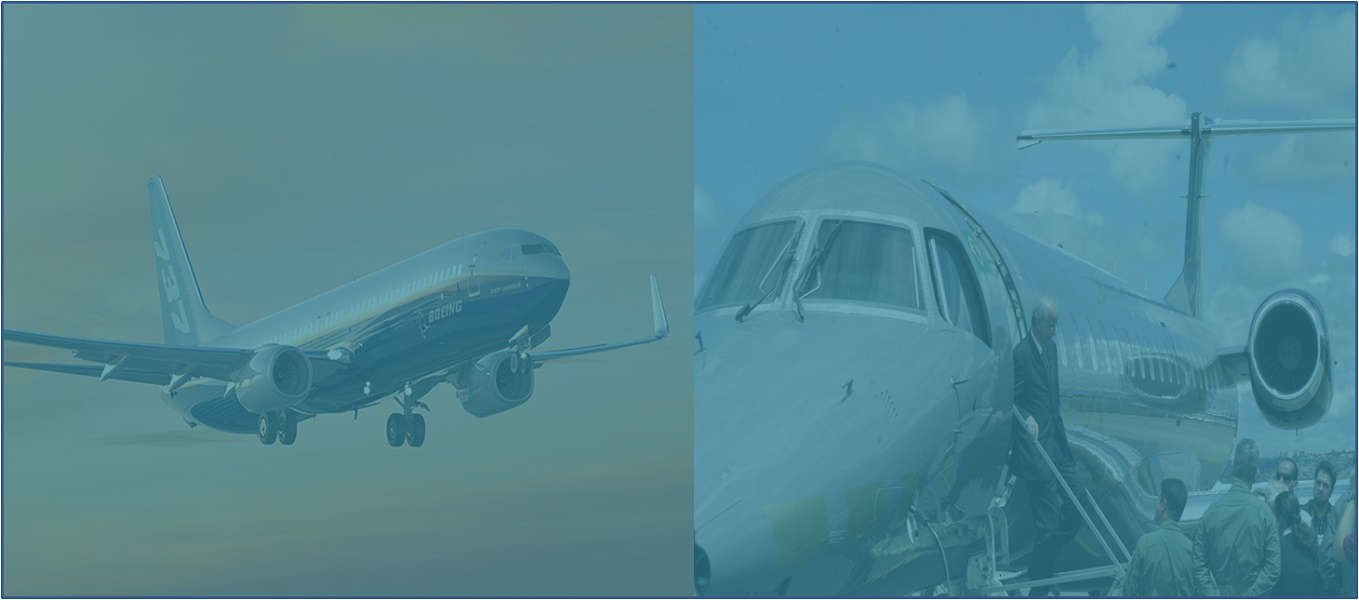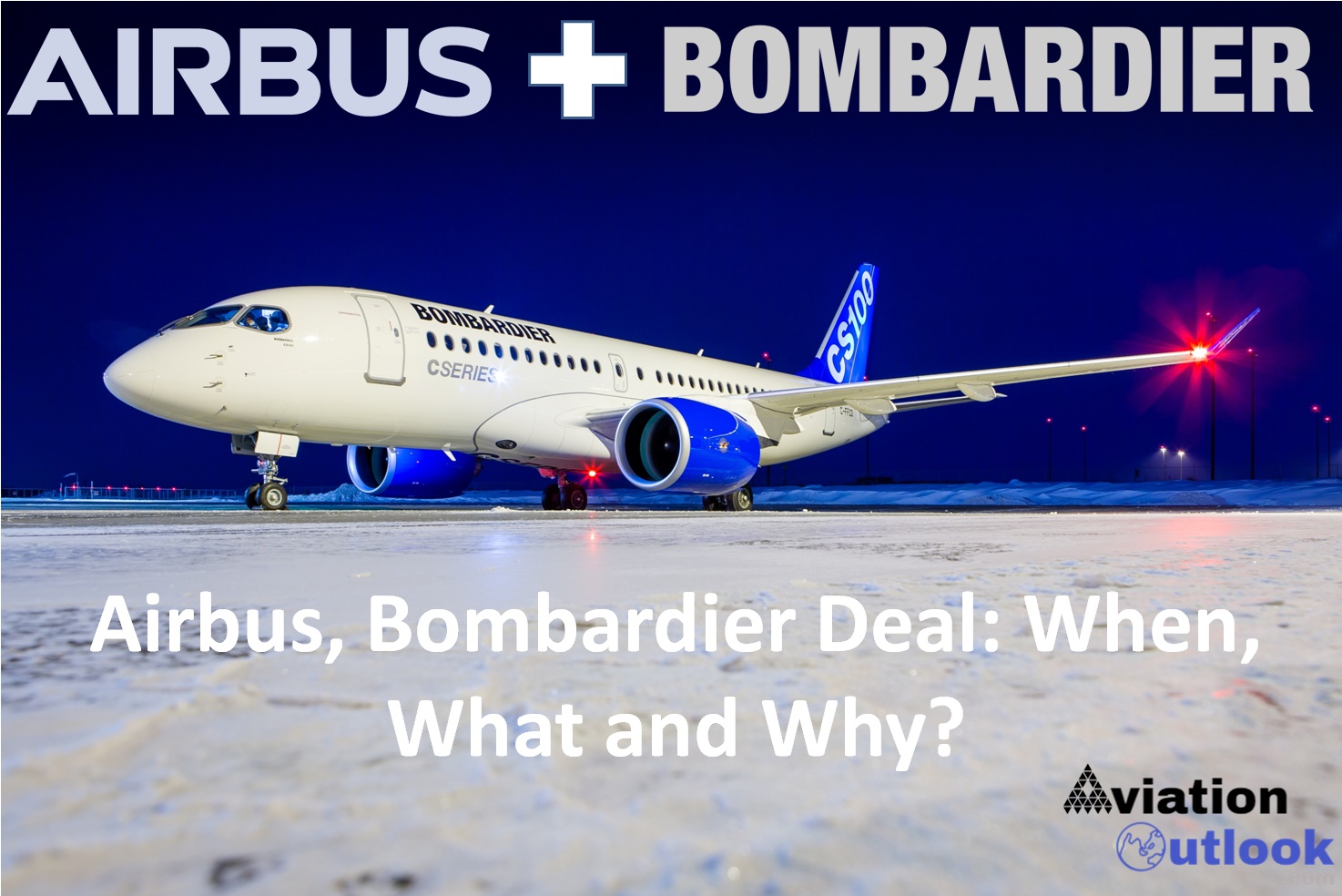
Aerospace Industry: All You Need to Know
The aerospace industry has been at the forefront of technological advancements and innovation for over a century. The industry’s history can be traced back to the Wright Brothers’ first flight in 1903, which paved the way for the evolution of aviation and space technology. Today, the aerospace industry spans several sectors, including commercial aviation, defense and military, space exploration and satellites, and general aviation.
Over the years, the aerospace industry has witnessed significant milestones, such as the invention of jet engines, the launch of satellites, the Apollo moon landing, and the development of reusable rockets. These advancements have significantly impacted various sectors, including transportation, communication, national security, and scientific research.
Major players in the aerospace industry include Airbus, Boeing, Lockheed Martin, Northrop Grumman, and SpaceX, among others. Each of these companies has made significant contributions to the industry in terms of design, manufacturing, and innovation.
This article aims to provide an overview of the aerospace industry, its major players, segments, supply chain, trends, safety regulations, challenges, economic impact, and sustainability efforts. It also explores the future advancements and innovations that are expected to shape the industry and the career opportunities available.
Major Players in the Aerospace Industry
The aerospace industry is dominated by a handful of major players, including both manufacturers and service providers. These companies have advanced technological capabilities and extensive experience in aerospace engineering, design, and manufacturing.
Major Aerospace Companies
The following are some of the major companies in the aerospace industry:
| Company Name | Headquarters | Business Focus |
|---|---|---|
| Boeing | Chicago, IL, USA | Commercial and military aircraft, satellites, missiles, and other defense products |
| Airbus | Toulouse, France | Commercial aircraft, helicopters, satellites, and military transport planes |
| Lockheed Martin | Bethesda, MD, USA | Military aircraft, missiles, and defense systems |
| Northrop Grumman | Falls Church, VA, USA | Defense products, including aircraft, unmanned systems, satellites, and cybersecurity solutions |
| General Dynamics | Falls Church, VA, USA | Military products, including combat vehicles, weapons systems, and aerospace technologies |
These companies have a significant impact on the industry due to their size, financial resources, and expertise. They are responsible for the majority of the world’s manufactured aircraft and space systems.
Also Read: Top 100 Aerospace Companies
Parts and Service Providers
In addition to these manufacturers, there are also several key parts and service providers that play an important role in the aerospace industry. These companies offer solutions for areas such as aerospace parts, maintenance, repair, and overhaul, as well as other support services.
Some of the major parts and service providers in the aerospace industry include:
- Pratt & Whitney – Provides aircraft engines and aftermarket services
- Honeywell Aerospace – Offers avionics, propulsion systems, and other aerospace components
- Safran – Offers aircraft engines, avionics, and other aerospace products
- Collins Aerospace – Provides avionics, interiors, and other services for commercial and military aircraft
These parts and service providers are a crucial part of the industry, as they help to ensure the safe and efficient operation of aerospace products throughout their lifespan.
Aerospace Industry Segments
The aerospace industry comprises several segments that cater to different markets and customers. Let’s explore the unique characteristics, challenges, and opportunities associated with each segment.
Commercial Aviation
The commercial aviation industry involves the manufacturing, sale, and operation of aircraft for passenger and cargo transport. This segment is highly regulated and competitive, with major players like Boeing and Airbus dominating the market. The main challenge faced by this segment is the volatile fuel prices, which directly affect the profitability of airlines. However, increasing demand for air travel, especially in emerging markets, presents significant growth opportunities.
| Key Players: | Boeing, Airbus, Bombardier, Embraer, COMAC |
|---|---|
| Characteristics: | Heavy regulation, cost-sensitive market, global competition |
| Challenges: | Fuel prices, safety concerns, political instability |
| Opportunities: | Emerging markets, new technology adoption, increased passenger demand |
Defense and Military
The defense and military segment involves the manufacture and maintenance of military aircraft, weapons systems, and other defense-related products. This segment is characterized by high barriers to entry, long development times, and complex supply chains. The main challenges faced by this segment are the ever-changing geopolitical landscape and budget constraints. However, increasing global tensions and the emergence of new threats present significant growth opportunities for defense contractors.
| Key Players: | Lockheed Martin, Boeing Defense, Raytheon, Northrop Grumman, BAE Systems |
|---|---|
| Characteristics: | High barriers to entry, long development cycles, complex supply chain |
| Challenges: | Geopolitical uncertainty, budget constraints, changing threat landscape |
| Opportunities: | Increasing global tensions, technological innovation, demand for new defense products |
Space Exploration and Satellites
The space exploration and satellite segment involves the design, manufacture, and launch of spacecraft and related systems for scientific research, commercial applications, and national security. This segment is characterized by high development costs, long lead times, and complex regulatory requirements. The main challenge faced by this segment is the unpredictable funding for government-sponsored programs. However, increasing commercialization of space and private investment in space startups present significant growth opportunities.
| Key Players: | SpaceX, Blue Origin, NASA, ESA, Roscosmos |
|---|---|
| Characteristics: | High development costs, long lead times, complex regulations |
| Challenges: | Unpredictable government funding, high risk of failure, limited demand for space products |
| Opportunities: | Commercialization of space, private investment, increasing demand for satellite-based services |
General Aviation
The general aviation segment involves the manufacturing, sale, and operation of small aircraft for recreational or business purposes. This segment includes a wide range of products, from single-engine planes to corporate jets. The main challenges faced by this segment are the high costs of ownership and operation, as well as limited demand due to the availability of commercial alternatives. However, increasing demand for air charter and special mission operations presents significant growth opportunities.
| Key Players: | Cessna, Gulfstream, Dassault, Textron, Embraer |
|---|---|
| Characteristics: | Diverse market, high costs, limited demand |
| Challenges: | High operating costs, limited demand, competition from commercial airlines |
| Opportunities: | Air charter, special mission operations, increased demand for business aviation |
Aerospace Industry Supply Chain
The aerospace industry supply chain is a complex network of suppliers, subcontractors, manufacturers, and service providers that work together to create, produce, and maintain aerospace products. From raw materials to finished products, every step in the supply chain is critical to the success and safety of aerospace operations.
Aerospace products are typically composed of a variety of components and materials, each of which must meet strict quality and safety standards. The supply chain is responsible for sourcing and delivering these components and materials to the manufacturers, who then assemble them into finished products.
Key components of the aerospace industry supply chain include:
| Component | Description |
|---|---|
| Raw Materials | Metals, alloys, composites, and other materials used in the manufacturing of aerospace products. |
| Component Suppliers | Companies that supply specialized components, such as engines, avionics, and control systems. |
| Subcontractors | Specialized companies that perform specific tasks, such as machining, welding, and painting. |
| Logistics Providers | Companies that handle the transportation and storage of raw materials, components, and finished products. |
| Maintenance, Repair, and Overhaul (MRO) Providers | Companies that provide maintenance and repair services for aerospace products, including engine overhauls, component repairs, and structural inspections. |
Effective supply chain management is critical to the success of the aerospace industry. Suppliers and subcontractors must adhere to strict quality and safety standards, and manufacturers must ensure that all components and materials are properly inspected and tested before being assembled into finished products. The use of advanced technologies, such as automation and predictive analytics, is becoming increasingly important in optimizing the efficiency and reliability of the supply chain.
Current Trends in the Aerospace Industry
The aerospace industry is experiencing a period of rapid evolution, driven by emerging technologies, changing customer expectations, and increasing global competition. Here are some of the latest developments shaping the industry:
Efforts towards sustainability
The aerospace industry is working towards more sustainable practices in aviation to reduce its carbon footprint and environmental impact. Aircraft manufacturers are exploring new materials, more efficient engines, and alternative fuels to reduce emissions. In addition, airlines are investing in more efficient fleets and implementing eco-friendly practices such as waste reduction and recycling.
Increased connectivity
The rapid growth of the internet of things (IoT) and big data analytics is transforming the aerospace industry, providing greater connectivity and improved data insights. Connected aircraft can send real-time data on performance and maintenance needs, allowing airlines to optimize operations and improve safety. In addition, IoT-enabled systems are being used for remote monitoring and control of ground operations.
Automation and robotics
The aerospace industry is leveraging automation and robotics to improve efficiency and reduce costs. Robotics are being used in manufacturing processes, such as drilling and fastening, to improve accuracy and speed. In addition, drones and autonomous aircraft are being developed for cargo delivery, surveying, and surveillance purposes.
Advancements in electric propulsion
The aerospace industry is exploring electric propulsion technologies as a potential replacement for traditional jet engines. Electric aircraft have the potential to reduce emissions, noise, and maintenance costs, while improving efficiency and reliability. Companies like Boeing, Airbus, and Rolls-Royce are investing in electric propulsion technologies and exploring new designs for electric-powered aircraft.
Commercial space exploration
Space exploration is no longer the exclusive domain of governments and space agencies. The private sector is increasingly investing in commercial space exploration ventures, partnering with government agencies to achieve common goals. Private companies such as SpaceX, Blue Origin, and Virgin Galactic are developing spacecraft and launch vehicles, with the aim of making space travel more accessible and affordable.
Future Advancements in the Aerospace Industry
The aerospace industry is constantly evolving, with groundbreaking advancements and innovations on the horizon. Here are some of the most exciting developments to watch for:
Supersonic Travel
Supersonic travel has been a topic of interest for decades, and recent advancements suggest that it may soon become a reality. Companies like Boom Supersonic and Aerion Supersonic are working on developing supersonic passenger planes that can fly faster than the speed of sound, dramatically reducing travel time for long-haul flights.
| Advantages | Challenges |
|---|---|
| -Reduced travel time | -High development and production costs |
| -Increased efficiency | -Environmental concerns |
| -Improved connectivity | -Noise pollution |
Electric Propulsion
Electric propulsion is a promising technology that could revolutionize the aerospace industry by reducing emissions and improving efficiency. Companies like Boeing and Airbus are investing in the development of electric-powered aircraft, and small startups are also exploring the technology for unmanned aerial vehicles and drones.
Reusable Rockets
The development of reusable rockets has the potential to significantly reduce the cost of space exploration and make it more accessible to private companies and individuals. Companies like SpaceX and Blue Origin have made significant strides in this area, successfully landing and reusing their rockets multiple times.
Autonomous Aircraft
Advancements in artificial intelligence and machine learning are paving the way for autonomous aircraft that can operate without a human pilot. While the technology is still in its early stages, companies like Boeing and Airbus are exploring the potential for autonomous flight in both commercial and military applications.
Air Traffic Management
The increasing demand for air travel has put a strain on existing air traffic management systems, leading to delays and inefficiencies. New technologies and systems, such as satellite-based navigation and digital communication, are being developed to improve air traffic control and enhance safety.
- Increased safety and efficiency
- Reduced delays and congestion
- Improved connectivity and communication
Aerospace Industry Regulations and Safety
The aerospace industry is subject to stringent regulations and safety standards to ensure safe and efficient operations. The regulatory framework governing the industry is aimed at promoting safety, security, and environmental sustainability.
Aviation Authorities
The primary regulatory bodies governing the aerospace industry include the Federal Aviation Administration (FAA) in the United States, the European Union Aviation Safety Agency (EASA), and the International Civil Aviation Organization (ICAO).
The FAA is responsible for regulating all aspects of civil aviation in the United States, including air traffic control, aircraft certification, and pilot licensing. The EASA has a similar mandate, overseeing the safety of civil aviation operations in the European Union. The ICAO is a specialized agency of the United Nations, responsible for setting international aviation standards and promoting safe and secure air travel worldwide.
International Standards and Certification Processes
The aerospace industry is subject to a range of international standards and certification processes, aimed at ensuring the safety, quality, and reliability of aircraft and aerospace products.
For example, the ISO 9001 standard specifies requirements for a quality management system, ensuring that products and services meet customer and regulatory requirements. The AS9100 standard is an extension of ISO 9001, specifically for the aerospace industry, covering design, development, and production of aerospace products.
The certification process involves a thorough evaluation of an aerospace product’s design, manufacturing, and maintenance processes. The aim is to ensure that the product meets all safety and quality standards, as well as regulatory requirements.
Safety Protocols
The aerospace industry implements a range of safety protocols to mitigate the risk of accidents or incidents. These protocols include safety management systems, flight planning and monitoring, aircraft maintenance and inspection, and crew training and qualification.
The safety management system (SMS) is a comprehensive approach to managing safety risks throughout an organization. It involves identifying potential hazards, assessing the associated risks, and implementing measures to mitigate or eliminate them. Flight planning and monitoring involves analyzing weather conditions, airspace restrictions, and other factors to ensure safe and efficient flight operations. Aircraft maintenance and inspection protocols aim to ensure that aircraft are in safe and reliable working condition. Crew training and qualification programs ensure that pilots and other personnel are properly trained and qualified to operate aircraft safely and effectively.
Aerospace Industry Challenges and Opportunities
The aerospace industry is constantly evolving, and as with any industry, there are challenges and opportunities that must be addressed. Here are some of the major challenges and opportunities facing the aerospace industry:
Challenges
1. Cost Pressures: The aerospace industry is highly capital-intensive, and the cost of manufacturing and developing new products can be very high. Cost pressures are a constant challenge for manufacturers and suppliers, who must balance the need for profitability with the need for innovation and growth.
2. Geopolitical Factors: The aerospace industry is highly sensitive to geopolitical factors, such as changes in trade policy, tariffs, and international relations. Political instability and uncertainty can have a significant impact on the industry’s supply chain, operations, and profitability.
3. Skilled Labor Shortage: The aerospace industry relies heavily on skilled professionals, such as engineers, technicians, and pilots. However, there is a shortage of qualified workers in many areas, which can lead to delays in product development, production, and maintenance.
4. Environmental Concerns: The aerospace industry is under increasing pressure to reduce its environmental footprint and adopt sustainable practices. This includes reducing greenhouse gas emissions, improving fuel efficiency, and minimizing waste and pollution.
Opportunities
1. Emerging Markets: The aerospace industry is seeing significant growth in emerging markets such as Asia, Africa, and the Middle East. These markets offer opportunities for manufacturers and suppliers to expand their customer base and tap into new sources of revenue.
2. Technological Advancements: The aerospace industry is at the forefront of technological innovation, with breakthroughs in areas such as materials science, robotics, and software development. These advancements offer opportunities for manufacturers and suppliers to create new products and improve existing ones.
3. Industry Collaboration: The aerospace industry is highly collaborative, with partnerships and joint ventures between manufacturers, suppliers, and research institutions. Collaboration offers opportunities for companies to share knowledge and expertise, and to leverage each other’s strengths and capabilities.
4. Sustainability: The growing demand for sustainable aviation presents opportunities for the aerospace industry to develop new products and technologies that are environmentally friendly. This includes the use of biofuels, electric propulsion, and other innovations that reduce the industry’s environmental impact.
Aerospace Industry in the Global Economy
The aerospace industry has a significant impact on the global economy, contributing to GDP, employment, exports, and technological advancements. The United States is a major player in the aerospace industry, with companies like Boeing, Lockheed Martin, and SpaceX leading the way. In Europe, Airbus is a dominant force, while China and Russia also have notable aerospace companies. The industry spans across continents and drives collaboration and partnerships between nations.
The aerospace industry contributes to economic growth by driving technological advancements and innovation, supporting high-skilled jobs, and stimulating exports. The industry also supports a robust supply chain, with aerospace suppliers and subcontractors playing an important role in delivering the components, materials, and services required for aerospace products. This creates a multiplier effect throughout the economy, generating additional jobs and revenue.
Aerospace Industry and Sustainable Practices
The aerospace industry is making significant strides towards sustainability and environmental stewardship. With the growing concern for climate change and the impact of aviation on the environment, several initiatives have been launched to reduce the carbon footprint and promote eco-friendly practices across the industry.
Fuel Efficiency
One of the most significant ways in which the aerospace industry is addressing sustainability is by improving fuel efficiency. This includes the development of more fuel-efficient engines, the use of advanced materials in aircraft design, and the implementation of more efficient operating procedures.
| Advancements in Fuel Efficiency | Description |
|---|---|
| Advanced Aerospace Materials | The use of lightweight materials like carbon composites and alloys significantly reduces the weight of aircraft, resulting in reduced fuel consumption and emissions. |
| Efficient Engines | New-generation engines like those used in the Boeing 787 Dreamliner and Airbus A350 XWB consume less fuel and emit fewer pollutants than their predecessors. |
| Operational Efficiency | The implementation of more efficient operating procedures like continuous descent approaches and single-engine taxiing reduces fuel burn and emissions during flight operations. |
Carbon Footprint Reduction
In addition to fuel efficiency, the aerospace industry is taking measures to reduce its carbon footprint. This includes the use of sustainable aviation biofuels, the development of electric-propulsion technologies, and the implementation of emission reduction strategies.
“Sustainable aviation fuels have the potential to reduce CO2 emissions by up to 80% compared to conventional jet fuel, and several airlines have already started using them in their operations.”
Eco-friendly Materials and Recycling Programs
The aerospace industry is also focused on developing and implementing eco-friendly materials and recycling programs to reduce waste and promote sustainable practices. This includes the use of biodegradable materials in aircraft manufacturing, the development of eco-friendly cabin amenities, and recycling programs for end-of-life aircraft components.
- Boeing’s ecoDemonstrator program is testing new technologies and materials to reduce the environmental impact of aviation.
- Airbus is testing a prototype aircraft powered by hydrogen, with the aim of achieving zero-emission flights in the future.
As the industry continues to grow and evolve, it is crucial that sustainability remains a top priority to ensure a greener future for aviation.
Aerospace Industry Careers and Education
The aerospace industry offers a wide array of career opportunities for individuals with diverse skill sets and educational backgrounds. From engineers to technicians, managers to pilots, the industry is constantly seeking qualified individuals to join its fast-paced and innovative workforce.
Entry-level positions in the industry typically require at least a high school diploma or equivalent. However, more specialized roles such as engineering and technical positions often require an associate’s or bachelor’s degree in a relevant field. Advanced degrees, such as a master’s or doctorate, may be required for leadership positions or advanced research roles.
Some of the most sought-after skills in the aerospace industry include knowledge of engineering principles, proficiency in computer-aided design (CAD) software, and experience in project management. Strong communication, problem-solving, and analytical skills are also highly valued.
Many aerospace companies offer internships, apprenticeships, and co-op programs to help individuals gain valuable hands-on experience and learn about the industry firsthand. These programs often provide opportunities for networking and mentorship, as well as potential job offers upon completion.
Additionally, many universities offer aerospace-related degree programs, ranging from aerospace engineering to aviation management. These programs typically combine classroom instruction with laboratory or hands-on experience to prepare students for the workforce.
Top Aerospace Industry Career Fields
There are several career fields within the aerospace industry, each requiring different levels of education, experience, and expertise. Some of the most common fields include:
| Career Field | Description |
|---|---|
| Aerospace Engineering | Designing and developing aircraft, spacecraft, satellites, and related systems and components. |
| Aircraft Maintenance and Repair | Inspecting, maintaining, and repairing aircraft to ensure safe and efficient operation. |
| Aviation Management | Managing the operation and administration of airports, airlines, and other aviation-related organizations. |
| Aerospace Manufacturing | Producing and assembling aircraft and aerospace components using specialized equipment and techniques. |
| Aerospace Research and Development | Conducting research and development to improve aerospace technologies and advance the industry. |
Other career fields within the industry include flight operations, air traffic control, and aerospace medicine, among others.
Aerospace Industry and Innovation Ecosystem
The aerospace industry is a dynamic and innovative ecosystem that thrives on collaboration and technological advancement. Research institutions, technology hubs, and startup companies all play a vital role in driving innovation and fostering collaboration within the industry.
Innovation Hubs
Several innovation hubs and research institutions serve as centers of expertise and technological development in the aerospace industry. Some of the most notable ones are:
| Innovation Hub | Location | Focus Area |
|---|---|---|
| NASA Ames Research Center | Moffett Field, California, USA | Space exploration, aeronautics, advanced computing |
| European Space Research and Technology Centre (ESTEC) | Noordwijk, Netherlands | Space technology, science missions, Earth observation |
| Japan Aerospace Exploration Agency (JAXA) | Tsukuba, Japan | Space exploration, aviation research, Earth observation |
These institutions bring together experts from various fields to collaborate on cutting-edge research projects and develop innovative products and technologies.
Startups and Disruptors
The aerospace industry has seen the emergence of several startups and disruptors in recent years, driving innovation and challenging established players. Some notable examples include:
- Boom Supersonic: A Colorado-based company developing the world’s fastest supersonic airliner.
- Relativity Space: A California-based company 3D-printing rockets to reduce manufacturing costs and lead times.
- ZeroAvia: A UK-based company developing hydrogen-electric powertrains for aviation to reduce carbon emissions.
These startups and disruptors are pushing the boundaries of what is possible in the aerospace industry, and their innovations have the potential to revolutionize air travel and space exploration.
Aerospace Industry and International Collaboration
The aerospace industry is a global endeavor that requires collaboration between organizations and countries. International partnerships have been vital in advancing the industry, from designing and manufacturing aircraft to space exploration and satellite missions. In this section, we explore the importance of international collaboration in the aerospace industry.
Examples of International Collaboration in Aerospace
There have been numerous examples of multinational collaborations in the aerospace industry over the years. One such example is the International Space Station (ISS), a joint project between the United States, Russia, Europe, Japan, and Canada. The ISS has been in operation since 1998 and has provided a platform for cutting-edge research in space, as well as international cooperation.
Another example is the Airbus consortium, a partnership between France, Germany, Spain, and the United Kingdom. Airbus is one of the leading aircraft manufacturers in the world, with a diverse range of products that includes commercial airliners, military aircraft, and helicopters.
Benefits of International Collaboration in Aerospace
International collaboration in aerospace has several benefits, including:
- Access to expertise and resources from multiple countries
- Sharing of knowledge and best practices
- Spreading the cost of developing new technologies
- Fostering international goodwill and cooperation
Collaboration also enables countries to undertake ambitious projects that would be impossible or impractical to achieve alone. For example, the European Space Agency’s (ESA) Rosetta mission, which landed a spacecraft on a comet, was a collaborative effort between 14 European countries, demonstrating the power of international cooperation.
Challenges of International Collaboration in Aerospace
Despite the benefits, international collaboration in aerospace also presents several challenges, such as:
- Differing regulations and standards across countries
- Language and cultural barriers
- Security concerns and intellectual property issues
- Logistical and coordination challenges
Effective collaboration requires careful planning, coordination, and communication between partners to ensure that everyone is on the same page. Additionally, legal agreements and contracts must be in place to govern the terms of collaboration, including ownership and distribution of intellectual property and financial responsibilities.
Aerospace Industry FAQs
As a complex industry, the aerospace industry generates a lot of interest and questions. Here are some of the most frequently asked questions:
What is the aerospace industry?
The aerospace industry is a broad and diverse sector that encompasses the design, development, production, operation, and maintenance of aircraft, spacecraft, satellites, and related systems and components.
What is the history of the aerospace industry?
The aerospace industry has a rich history that dates back to the early 20th century. Its major milestones include the Wright brothers’ first flight, the development of jet engines, the first human spaceflight, and the creation of reusable spacecraft.
Who are the major players in the aerospace industry?
The aerospace industry is dominated by major companies such as Boeing, Airbus, Lockheed Martin, Northrop Grumman, and General Electric, among others. These companies are involved in various segments of the industry, such as commercial aviation, defense and military, and space exploration.
What are the different segments of the aerospace industry?
The aerospace industry is composed of several segments, including commercial aviation, defense and military, space exploration and satellites, and general aviation. Each segment has unique characteristics, challenges, and opportunities.
How does the aerospace industry impact the global economy?
The aerospace industry is a major contributor to the global economy, generating billions of dollars in revenue and supporting millions of jobs worldwide. It also drives technological advancements and innovation.
What is being done to make aviation more sustainable?
The aerospace industry is taking steps to reduce its environmental impact and promote sustainability. These efforts include developing eco-friendly materials, improving fuel efficiency, reducing carbon emissions, and implementing recycling programs.
What kind of education and training do you need to work in the aerospace industry?
The aerospace industry requires a range of skills and expertise, depending on the specific role. A career in the industry typically requires a degree in engineering, science, or a related field, as well as technical training and certification.
What are some of the challenges facing the aerospace industry?
The aerospace industry faces a range of challenges, including cost pressures, geopolitical factors, skilled labor shortage, and environmental concerns. However, the industry is also ripe with opportunities for growth and innovation.








